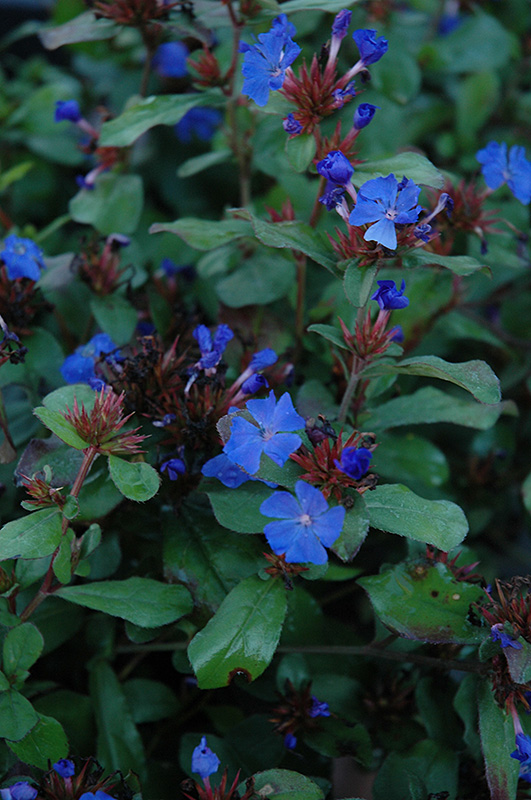Plant Finder
Height: 12 inches
Spread: 18 inches
Sunlight:
![]()
![]()
Hardiness Zone: 4
Other Names: Leadwort
Description:
Excellent groundcover with clusters of the truest blue flowers in late summer; foliage turns a nice bronzy-red color in fall; flowers resemble that of woodland phlox, and the red calyces add a wonderful color contrast
Ornamental Features
Plumbago features showy clusters of blue star-shaped flowers with brick red calyces at the ends of the stems from late summer to early fall. Its glossy oval leaves are green in color. As an added bonus, the foliage turns a gorgeous red in the fall.
Landscape Attributes
Plumbago is an herbaceous perennial with an upright spreading habit of growth. Its medium texture blends into the garden, but can always be balanced by a couple of finer or coarser plants for an effective composition.
This is a relatively low maintenance plant, and is best cleaned up in early spring before it resumes active growth for the season. It is a good choice for attracting bees and butterflies to your yard. It has no significant negative characteristics.
Plumbago is recommended for the following landscape applications;
- Mass Planting
- Rock/Alpine Gardens
- Border Edging
- General Garden Use
- Groundcover
- Naturalizing And Woodland Gardens
Planting & Growing
Plumbago will grow to be about 10 inches tall at maturity, with a spread of 18 inches. Its foliage tends to remain low and dense right to the ground. It grows at a medium rate, and under ideal conditions can be expected to live for approximately 8 years. As an herbaceous perennial, this plant will usually die back to the crown each winter, and will regrow from the base each spring. Be careful not to disturb the crown in late winter when it may not be readily seen!
This plant does best in full sun to partial shade. It does best in average to evenly moist conditions, but will not tolerate standing water. It may require supplemental watering during periods of drought or extended heat. It is not particular as to soil type or pH. It is somewhat tolerant of urban pollution. Consider covering it with a thick layer of mulch in winter to protect it in exposed locations or colder microclimates. This species is not originally from North America. It can be propagated by division.


